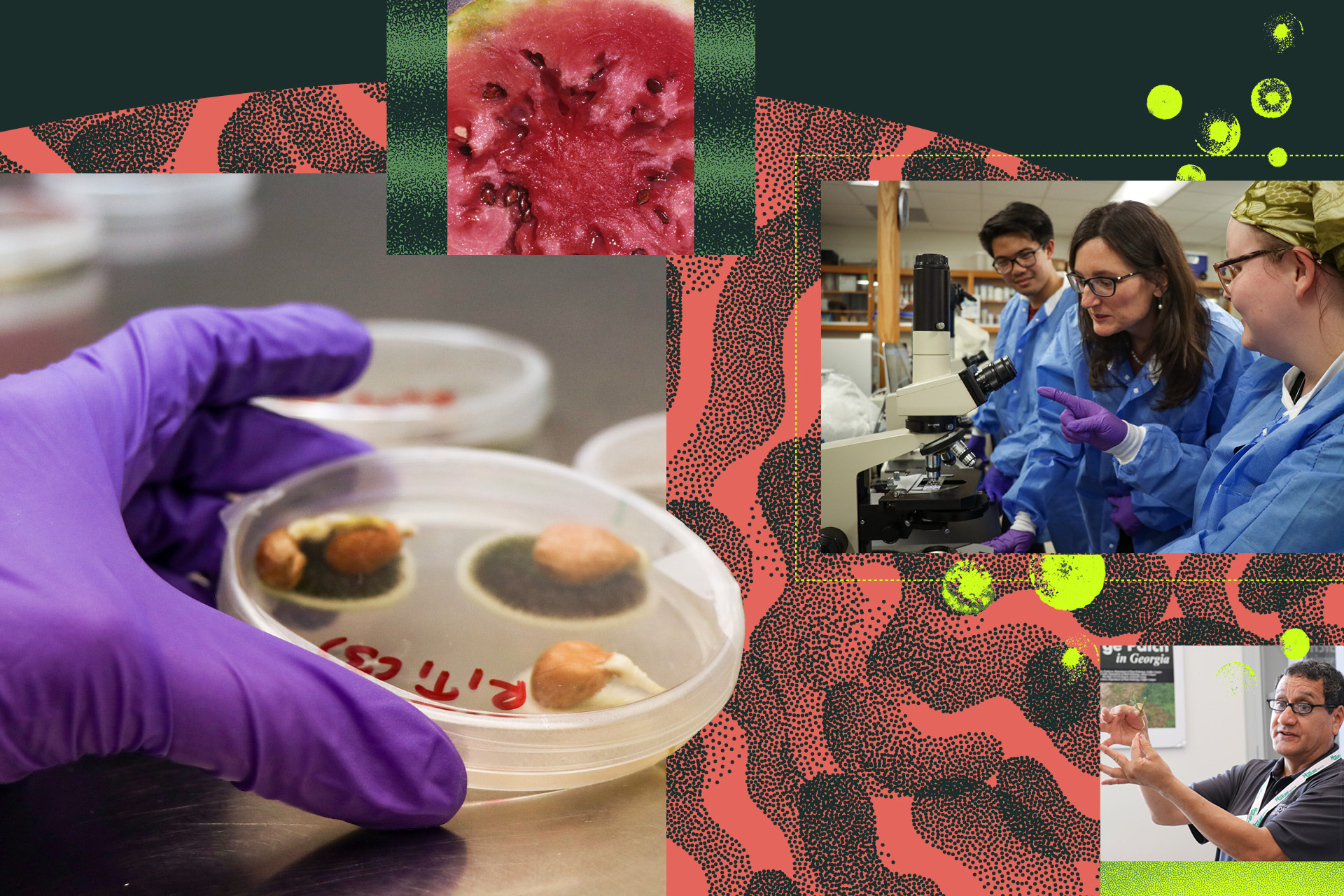Cantaloupes and cotton might seem like an odd couple but they’re actually proving to be a perfect pair.
Planting the two together is proving to reduce planting time and costs while generating the same, if not more, profit for some Georgia farmers.
Tift County Extension Coordinator Brian Tankersley has been studying the planting method, called intercropping, since 2010 and has seen positive results in some of his farmers’ fields. He has also found that management and yields from intercropping canteloupes and watermelons with cotton are comparable to planting the melons alone.
William Dillard, who farms in Excelsior, approached Tankersley about planting cantaloupe and cotton in the same field after seeing the process in another farmer’s field.
Prep once, harvest twice
“You prep your land one time for the melons. All you’re doing is going in and seeding so you don’t have as much cost as far as re-prepping your land,” Dillard said.
Intercropping also saves valuable time during the growing season.
“Once you get through with the melons, it’s very hard to get a second crop and get it to where you can get it to grow before frost. This way you’re able to get it planted in a timely manner,” he said.
One of Dillard’s intercropped fields produced 1,200 pounds of cotton without affecting the cantaloupe yields and the other produced 800 pounds of cotton without affecting the melon yield.
“The difference was he ran out of water in the cotton crop on that second field,” Tankersley said.
In 2011, five growers participated in an evaluation study led by Tankersley. The study consisted of 12 fields, totaling 385 acres. The farmers intercropped 1,000 acres, but only collected data on 385.
The 385 acres yielded between 840 to 1,579 pounds an acre with an average of 1,216 pounds, or about two and half bales of cotton per acre. Georgia farmers produce an average of about 90 to 950 pounds an acre when cotton is grown alone.
Fertilizer goes farther
Intercropping allows farmers to make better use of what could be limited resources, Tankersley said. Cotton fertilizer costs are reduced because the crop shares the same fertile soil used earlier in the season by cantaloupes or watermelons. The young cotton plants and the melon crop also share the same irrigation systems, so the cost of having to irrigate a second field is eliminated. Also, because the land is already tilled for the melon crop, land preparation costs for the cotton are eliminated.
Though intercropping has proven to be beneficial, it is not recommended for every farmer. For those who have limited water supplies, too little irrigation on the intercropped field will have adverse effects.
Also, intercropping won’t work on the late cucurbit crops that some farmers plant with plans to harvest watermelons in late July. That’s too long to hold back cotton crops, Tankersley said.
Look at market first before intercropping
Farmers should also consider the market. Grain sorghum is sometimes planted after cantaloupes so farmers must determine how the grain and cotton prices compare. Heavy weed pressure is another concern. According to the study, in 2012, 75 percent of fields had some weed pulling following the harvest of cucurbit crops.
“It’s hard to fight those weeds for that long of a period of time,” Tankersley said.
He cautions farmers not to do anything that would potentially harm their cantaloupes and watermelons, especially considering the expense that goes into growing both.
“The primary crop is the cantaloupes and watermelons,” Tankersley said. “This is where they have to spend so much money. You don’t want to jeopardize your primary crop trying to grow the secondary crop.”
Many farmers spend about $2,000 an acre to plant the melons and take them all the way to harvest.
Try it small-scale first
Tankersley recommends farmers who are interested in intercropping move forward cautiously and try it on a limited number of acres first.
“I tell people, don’t grow watermelons and cantaloupes just to plant cotton in it,” he said. “Don’t do that because you can lose a lot of money, and we’ve got enough watermelons and cantaloupes being grown. We don’t want to flood the market with melons.”








